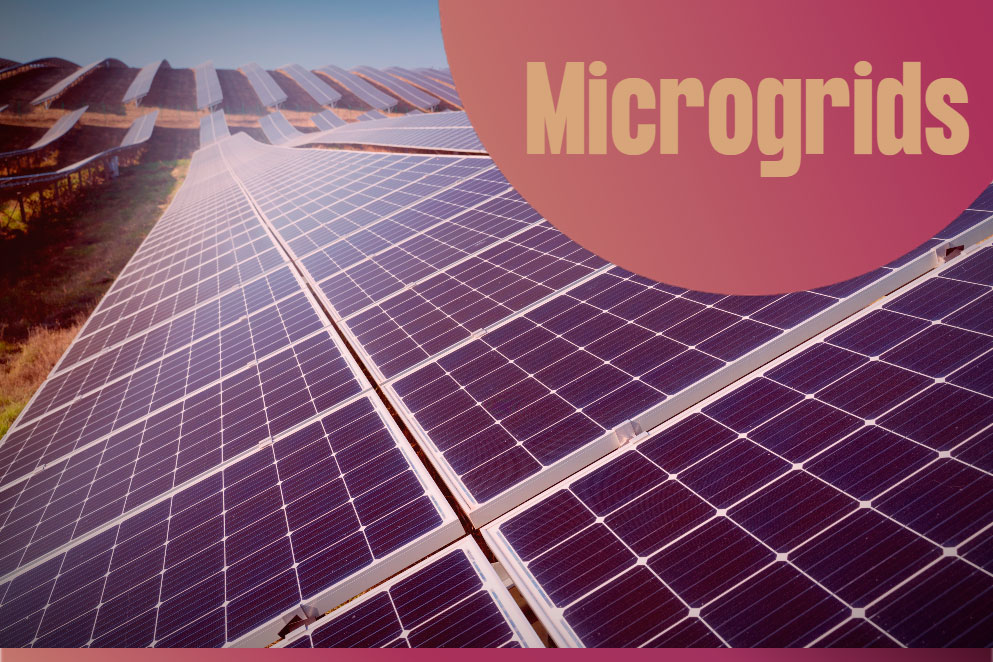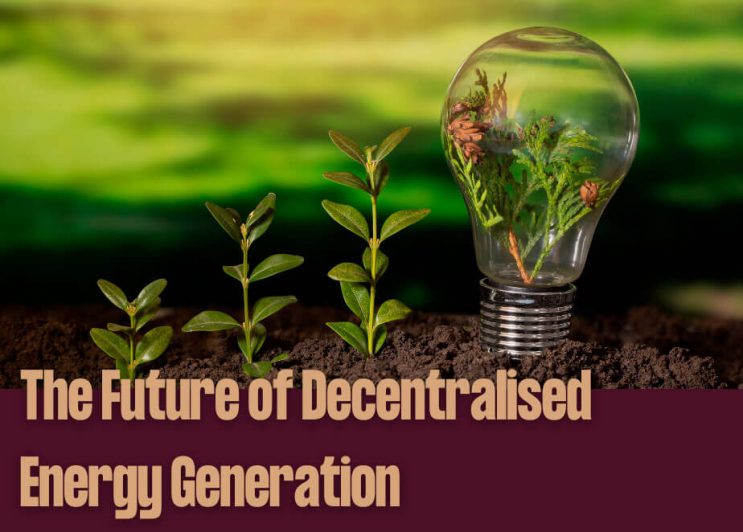Microgrids – Sustainable Energy Future

Global Energy Challenges.
On 1st January 2016, The United Nations introduced a set of seventeen measures known as the Sustainable Development Goals, designed to help countries all over the world to mobilise efforts to end all forms of poverty, fight inequalities and tackle climate change. Goal number seven was entitled “Affordable and Clean Energy”. It highlights the fact that, although 9 out of 10 human beings now have access to electricity, there are still 789 million people who do not, the vast majority of whom – 548 million – live in sub-Saharan Africa. Without electricity, women and girls in those societies are burdened with the task of fetching water from wells that are often long distances from their homes. They’re also exposed to harmful household air pollution from the use of solid fuels or kerosene for cooking, heating, and light. Wider community health is adversely affected too, as local clinics are unable to store basic medicines like vaccines for children, and local economies are stifled because businesses cannot be created or run effectively without a reliable source of power. At the same time, there is an increasing urgency in rich western nations to drastically reduce carbon emissions to combat climate change, coinciding with a rapidly growing desire among many local communities to achieve greater independence from centralized power providers. The United States is a prime example. According to the US Environmental Protection Agency (EPA), the American power grid is made up of over 7,300 power plants, nearly 160,000 miles of high-voltage power lines, and millions of miles of low-voltage lines connecting 145 million customers throughout the country. The infrastructure is very old and poorly maintained. Power outages are a regular occurrence and extreme weather events like the 2021 ‘big freeze’ in Texas or Hurricane Ian, which hit Florida in 2022, can overwhelm a network that is simply not designed for the demands of 21st Century consumption and climate. In 2017 the National Academy of Sciences classified the US grid as ‘vulnerable,’ and urged the development of alternative systems.
Whether it’s a community in a western industrialised country looking for additional energy security, or a village in a remote region of a developing nation, seeking their own electrical power source for the first time, the solution being adopted more and more often these days is a ‘microgrid’.
What is a Microgrid?
Microgrids are typically small, localised and often self-contained networks of interlinked power sources with their own control capability. They are either completely disconnected from a national electricity grid, or have the ability to disconnect and operate independently when needed, for example during a power outage, providing a more reliable energy supply to a community.
The concept of a microgrid is not a new one. They have existed for decades in countries like the United States, providing power for relatively large institutions like college campuses and military bases. These types of existing applications typically employ fossil-fuel-driven ‘combined heat-and power’ plants. Their function is therefore solely to improve energy security rather than address the issues of climate change. Newer microgrids, however, are coming into operation all over the world today that are designed with the climate emergency firmly in mind. They make use of renewables like wind, solar or geothermal energy, in combination with energy storage technologies like lithium-ion batteries.
The advantages of microgrids.
One of the most attractive benefits of a microgrid is that it offers a way for a neighbourhood of domestic or commercial properties to more efficiently manage their own local energy use, and decide for themselves which renewable sources are best for them.
Then there are municipal and government facilities like hospitals, data centres, airports and military bases that simply cannot risk a power outage for any length of time. A local microgrid with its own energy storage facility may be the perfect solution in those circumstances. And as more and more people gravitate towards urban living in the coming decades, microgrids will increasingly become the ‘go-to’ solution for supplementing existing systems to avoid a grid overload from an influx of new residents.
The turbo boost of digital connectivity.
Modern digital communication technologies are revolutionising the way we use energy in our everyday lives. The ‘internet of everything’, as it is becoming known, will connect virtually every electrical device in our homes to cloud-based monitoring facilities that can optimise how and when we have electrical energy delivered. A microgrid connected in this way will be able to take advantage of grid electricity when it is at its cheapest point during the day and then seamlessly switch to a local renewable energy source, or tap into its energy storage backup during expensive peak periods. And when renewables on a microgrid are producing more energy than its users require at any given time, those electrons can be sold back into the grid, potentially providing an additional income for the local residents.
Challenges of implementing microgrids.
As with any new technology, especially one that has the potential to disrupt the existing market, there are significant challenges and hurdles that microgrid operators will need to overcome, even in well-resourced western economies. As well as the obvious capital expenditure of the initial installation, power supply from a microgrid is generally more expensive than power from the main grid, driven mainly by the need for built-in redundancy to guarantee high reliability, and the need for upgrades to enable a local grid to interface safely with existing distribution circuits. In addition, many western jurisdictions operate what is effectively a regulated monopoly which means only the local utility is allowed to sell power to customers. In these circumstances, microgrid asset owners are forbidden from selling power to other customers, which means more red tape and costly bureaucracy.
In developing areas of the world like Africa and Asia, the Productive Use of Energy (PUE) in microgrids holds great promise for local economic development, but designing, developing, and operating businesses in those areas can be difficult. According to an analysis carried out by the US National Renewable Energy Laboratory (NREL) in conjunction with the non-profit energy development platform Energy4Impact, successful implementation of such systems will require an in-depth understanding of the needs of a community in order to identify specific “Productive Use” focused programs such as business mentoring for the entrepreneurs and the establishment of productive use information and demonstration centres. Access to capital will also need to be vastly improved, either via grants or concessionary funding for the purchase of equipment or via support from local government or donor development programs that focus on economic development in rural areas.
Payment risk is another challenge for developers in the global south. Some customers may be unable to afford the initial connection charge or ongoing electricity bill. This is particularly the case in agricultural areas before the harvesting season, when financial resources are more limited. Customers are sometimes unwilling to pay because they are not satisfied with the electricity service, perhaps because of metering or connectivity issues or because of unrealistic expectations about the quality and cost of service. And many rural microenterprises lack the technical knowledge and skills needed to run a business. Most overestimate the demand from existing or new systems, leading to the underuse of the microgrid which tends to drive up costs.
Social Acceptance can also be an issue if an operator is not completely transparent about their plans and does not consider local public opinion. The NREL report suggests there is no easy solution to these challenges. Sustained engagement from support providers and business mentors over a long period of time will be essential though, as will early engagement with communities via group meetings and awareness campaigns.
One of the biggest limiting factors in all renewable microgrids, regardless of their location, is the intermittency of wind and solar power. The best way to overcome that is to efficiently store surplus energy for use when resources are sparse. Lithium-ion batteries are the most common form of energy storage (other than pumped hydro), but they are generally only economically viable for durations of about four hours at a time. Longer-duration energy storage systems like redox flow or even hydrogen storage may well be required in the future to ensure energy security over prolonged periods of days or even weeks during adverse weather conditions.
The future of microgrids
Rapid economic advances in developing nations are driving the increased use of microgrids for rural electrification in those countries, Meanwhile, here in the West, recent major extreme weather events in places like California, Florida and Texas have reinforced the perception that localised energy provision will be an essential requirement for future resilience. In addition, as the world struggles to meet the extremely challenging decarbonisation targets set out by the United Nations and the Intergovernmental Panel on Climate Change (IPCC), there is a growing sense of urgency among local communities to find ways to reduce their reliance on large, centralised infrastructure that still leans heavily of fossil fuels. And governments are increasingly concerned that those poorly maintained behemoths are at greater and greater risk of cyberattacks from hostile third parties as sophisticated hacking software continues to outpace the resources and capability of incumbent operators. As a result, many administrations around the world are implementing their own national initiatives to encourage the development of microgrids. That could lead to a very welcome reduction in the number of bureaucratic hurdles currently deterring potential investors. According to recent analysis by energy consultants Markets and Markets, the global microgrid market size was estimated to be USD 26.9 billion in 2022 and is projected to reach USD 63.2 billion by 2027, representing a remarkable compound annual growth rate (CAGR) of almost 19%.
There is no doubt that microgrids offer an attractive way forward in wealthy industrialised western countries and in developing nations alike. If regulatory frameworks can be adapted to properly accommodate and integrate new technologies into existing systems, and if the right level of training and support can be provided in regions that are implementing electrical power for the first time, then the future of localised microgrid power generation could be very bright indeed.
Strathsquare is a seed stage project initiator that provides required resources to entrepreneurs and innovators. We are driven by a sense of urgency to transition away from unsustainable technologies and processes, we believe that what we do should have a genuinely positive impact on society and our environment.
If you have an innovative idea
We are committed to supporting innovators who have the potential to make businesses more sustainable and for all.


